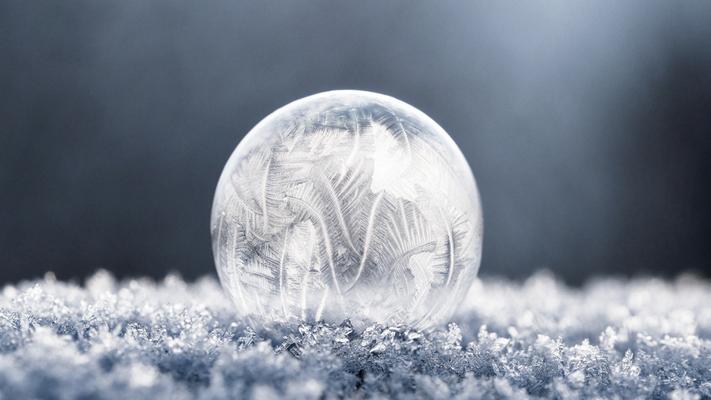
Ghosting and Avoidant Behaviour: Why We Pull Away and 3 Ways to Heal from It
Have you ever experienced ghosting? The two of you were chatting happily the night before, and the next day the person suddenly disappears, never replying again?
Is love at first sight real, or does lasting love require something deeper? Let’s uncover how to find true love with psychology.

Is this “love at first sight” or just an illusion in romance? Imagine locking eyes with a stranger across a crowded room, and in that instant, you feel a spark — a connection so powerful it seems like destiny. In this article, we explore the psychology behind these intense first encounters and how our subconscious shapes early romance. Through understanding the projections we place on potential partners, we can better navigate the journey to find true love. Is love at first sight real, or does lasting love require something deeper? Let’s uncover how to find true love.
Carl Jung believed that within our collective unconscious, there exist two archetypes: the anima and the animus (Jung, 1951 ; 2014). The anima represents a man’s inner feminine side, while the animus represents a woman’s inner masculine side. These archetypes form during early childhood, a time when the differences between boys and girls are minimal. At that stage, children’s thoughts and behaviours are quite similar since they haven’t yet developed distinct sexual characteristics, setting the stage for having a crush and the possibility of love at first sight later in life.
As we grow older, we begin to embody our gender roles, which often involve suppressing certain traits. For example, boys might repress their emotional sensitivity and nurturing tendencies—traits typically associated with femininity—in order to emphasise their masculinity, traits like assertiveness and competence that society values in men. Similarly, girls may suppress traits such as assertiveness or dominance, which are typically viewed as masculine. This process can impact their romantic relationships and the way they experience love at first sight.
These repressed traits form our anima or animus, depending on our gender. In essence, everyone, regardless of gender, carries an inner version of the opposite sex. This internal counterpart plays a significant role in shaping how we experience attraction and connection with others, especially during moments of love at first sight, where we might unconsciously be drawn to someone who reflects our inner anima or animus. Such moments of instant attraction can spark a deep sense of romance, tapping into the hidden parts of ourselves and often leaving a lasting impression that begins with love at first sight.
According to the theory of collective unconscious, we often experience love at first sight due to a projection known as anima or animus. This means projecting your inner opposite gender onto someone else. For example, a man might project his inner feminine side onto a woman he meets. Interestingly, the person he falls for might not be the most attractive but rather the one who best matches his anima image, sparking love at first sight.
This explains why the romance of falling in love doesn’t always require deep understanding. The ideal person already exists in our mind; we’re just searching for the right "container" in the real world. When we find someone who fits this projection, they seem like our destined partner or soulmate, creating a powerful romance and holding an irreplaceable position.
Cultural concepts, like referring to a partner as your "other half," reflect this idea. We feel complete in a relationship, embodying both male and female aspects within ourselves. This projection concept enhances romance and love at first sight across various cultures and languages, highlighting the theory’s depth and relevance.
In the psychology of “love at first sight,” the concept of projection plays a crucial role in shaping the initial feelings of romance. Often, when we experience this instant attraction, it’s not necessarily the real person we are falling for, but rather an idealised image that reflects our subconscious desires. This projection can create a gap between expectations and reality. The person we believe we’re in love with during these early stages of courtship may not match the perfect image we’ve constructed in our minds.
For example, in a “love at first sight” scenario, you might imagine your ideal partner as tidy and organised, and during the initial phase of romance, you may not notice their messy habits. However, once you live together, the reality of their lifestyle can shatter this illusion, turning that initial spark of love at first sight into disappointment. This highlights how powerful the projection of the anima or animus is, driving us into these early romantic feelings. But for romance to truly last, it’s essential to move beyond this fantasy, truly understand your partner, and accept their flaws to develop a deeper, lasting love. Love at first sight must evolve from a projection-based attraction into a more real and enduring relationship.
Understanding this psychological projection can also offer comfort after a breakup. When a romance ends, you might feel as though you’ve lost “the one,” especially if the relationship began with the intensity of love at first sight. However, this may simply be the loss of your projected ideal. Once you recognise this, you can find someone else who fits your subconscious image, and the process of romantic projection can begin anew. This insight helps us grow emotionally and allows us to learn more about ourselves through love and romance, even in challenging situations like unrequited love or heartbreak.
Discovering love at first sight and developing emotional resilience are key to creating lasting, fulfilling romances. MindForest, an innovative AI app, provides tailored tools to help you navigate the complexities of love at first sight and build emotional strength to sustain meaningful romance.
1) Psychology Module and Interactive Courses: These resources help you gain deeper self-awareness and improve emotional resilience. By mastering these skills, you’ll be better equipped to handle the highs and lows of love at first sight and build a strong, lasting romance.
2) Supportive AI Mentor: This feature provides personalised guidance to address your unique romantic challenges. Whether it’s understanding what you truly seek in a partner or enhancing communication skills, the AI mentor offers practical advice to help you strengthen your romantic relationship.
3) Reflective Insight Journal: Documenting daily interactions and emotional responses fosters greater self-awareness in your pursuit of love. This tool encourages thoughtful reflection, enabling you to approach future romances with confidence and clarity.

By leveraging MindForest, you gain essential tools to find love, manage the challenges of romance, and foster deep, resilient connections, setting the foundation for a meaningful and lasting relationship.
Jung, C. G. (2014). The archetypes and the collective unconscious. Routledge.
Jung, C. G. (1951). The syzygy: Anima and animus.Aion: Researches into the Phenomenology of the Self,9(pt 2), 11-22.
Discover practical psychology tips you can apply to your everyday life. From building resilience to improving relationships and finding work-life balance, our blog brings expert-backed insights that help you grow.

Have you ever experienced ghosting? The two of you were chatting happily the night before, and the next day the person suddenly disappears, never replying again?

This article breaks down the psychology of nonchalance, signs of a nonchalant dater, the debate nonchalant vs chalant, and what truly matters when forming modern relationships.

Have you ever felt so intensely drawn to someone that you couldn’t stop thinking about them—imagining every possible interaction, decoding every message, overanalysing every glance? If so, you may not be experiencing love, but something more specific: limerence.
Download MindForest and turn these insights into action. Get personalized support from ForestMind AI Coach, track your progress, and unlock your full potential.